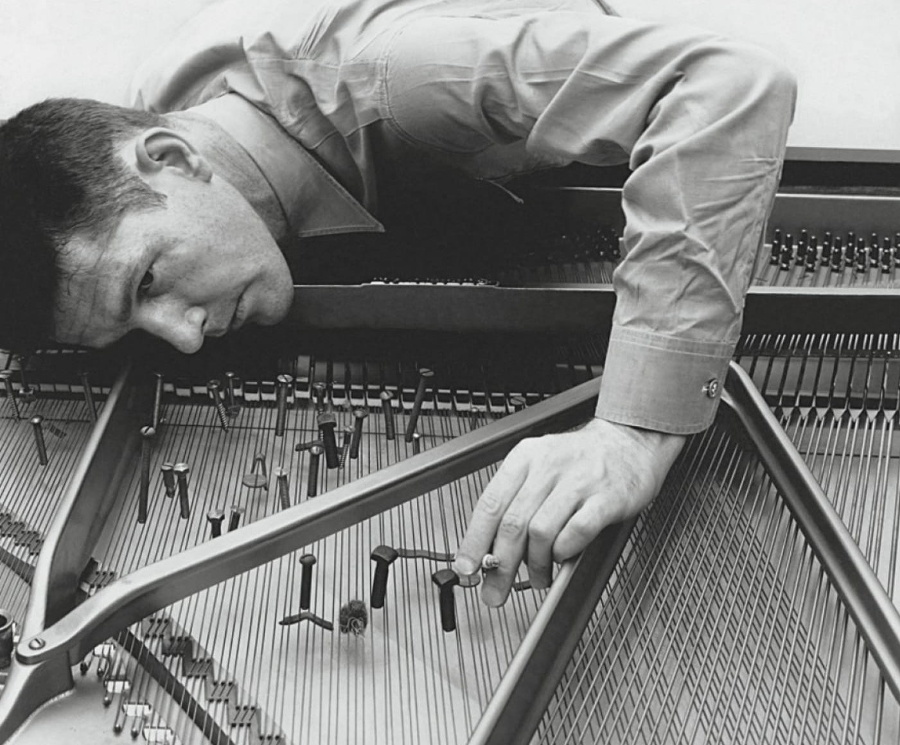2h
€22
From 16 years old
Daniel Lesbaches
French
1st class : Saturday, September 6, 3 pm – 5 pm
In parallel to the exhibition, Resonant: Bodies, Songs, and Strings, MACS MTO has created an interdisciplinary art history program centered on the themes of music and silence.
Continue your museum experience with this series of master classes on interdisciplinary approaches to art, spirituality, and listening.
Using music as a model, the avant-garde movements of the past century, particularly in abstraction, reactivated the concept of painting as a quest for spirituality.
These four sessions aim to explore the complex relationships – and mutual fascination – between the visual arts and music in a historical perspective, from the early 20th century to today.
Saturday September 6th, 3 pm – 5 pm
Synesthesia : Music as a Model for Art at the begining of the 20th century
The first class explores how modern painters in the early part of the 20th century—particularly during early abstraction—were influenced by music. From Kandinsky to Mondrian, as well as other Russian and American artists, we examine how musical concepts informed their visual language. The concluding discussion focuses on how poets like Apollinaire and Cendrars contributed to the dialogue between visual arts and musicality, fostering a synesthetic approach that bridged sensory experiences.
Saturday October 11th, 3 pm – 5 pm
Artist-composers
This master class offers context on influential artists from the Russian avant-garde, such as Baranoff-Rossiné with his “optophonic piano” and Matiouchine, highlighting their innovative approaches. It also covers Marcel Duchamp’s conceptual compositions, emphasizing his role in redefining artistic boundaries. The discussion then explores how these pioneers of modernity have influenced contemporary artists like Céleste Boursier-Mougenot, Erik Samakh, Xavier Veilhan, Anri Sala, Rirkrit Tiravanija, Saâdane Afif, and Yazid Oulab, illustrating the enduring legacy of avant-garde experimentation in today’s artistic landscape.
Saturday November 22nd, 3 pm – 5 pm
Reshaping Music: Innovations and Intersections
This class examines the ways artists and composers have challenged and transformed traditional notions of music.
Reshaping Music and Painting: The concept of “automatism,” originating from Surrealist practices, blurs the line between automatic drawing and musical improvisation, fostering a fluid interchange between visual and auditory creation.
Combinatorial Music: Both historical composers (Haydn, Mozart) and contemporary figures (Stockhausen) have developed techniques of combinatorial music, where different musical elements are systematically combined to generate new sonic structures.
John Cage’s “Prepared” Instruments: Cage’s innovative use of prepared pianos—modifying instruments with objects to produce unconventional sounds—embodies the reshaping of musical possibilities.
Dada and the Confluence of Arts: Dada artists like Hugo Ball and Kurt Schwitters embodied a radical fusion of music, image, and poetry, emphasizing chaos, spontaneity, and interdisciplinary experimentation to challenge artistic norms.
Saturday December 6th, 11 am – 1 pm
Silence
Many artists have been interested in silence, for different reasons. These include Joseph Beuys and Yves Klein, but also Paul Kos, David Wojnarowicz, Douglas Gordon and others. Here again, a parallel with composers who have explored silence in music, especially La Monte Young and John Cage. Not forgetting the French historian Alain Corbin, who published a “History of silence” ten years ago.

Cage preparing piano-1, screws bolts, 1947 ©DR